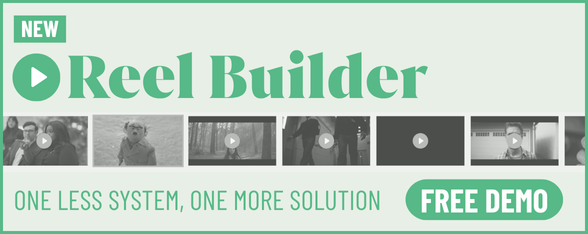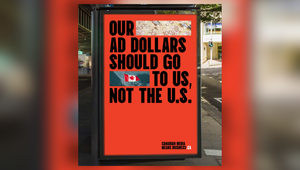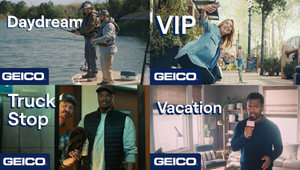
Creativity Squared: Ashwin Gopal Defines Himself by Work That ‘Does’ Rather than Just ‘Says’

Action certainly speaks louder than words for Ashwin Gopal, who has made an impact over the past 15 years with projects that incite change and impact for brands. He has been a creative champion for his clients, executing world-class ideas that have been awarded for their effectiveness and creativity.
He has earned his stripes at several renowned agency networks in Australia and New Zealand. Currently a creative director at TBWA New Zealand, his work has helped win a D&AD Yellow Pencil and Effie’s Client of the Year, whilst growing the business with new clients. Recently, Ashwin has been drawing on his childhood experience in India to tell stories about the Sharma family for ANZ’s ‘We Do How’ brand platform.

ANZ’s ‘We Do How’ brand platform follows the stories of the Sharma family
When he’s not thinking about brands, Ashwin is probably chasing endorphins with sports and motorbikes, or relaxing by cooking.
Person
I’m a ‘fact is stranger than fiction’ type of person. I look to real life for inspiration and ideas.
For me, it’s easier to be creative once I have that foundation of life experience – whether it’s my own or someone else’s. I feel this provides a unique perspective on each brief – a lens through which to look at the challenge and to assess if the ideas on the page will help solve it.
With time, I have also learned to be more comfortable about putting myself into my work. Your worldview, your beliefs, your pet peeves and your own stories are rich hunting grounds for ideas no one else can have.
Lastly, I’m a big believer in ideas that ‘do’ rather than ‘say’. The work I’m most proud of has demonstrated a brand’s beliefs rather than just stating them. For me, it’s a way of getting past the ‘bullshit’ filter that most people have when they look at advertising. If a brand can do something brave to prove its commitment to a belief, the audience is less likely to dismiss or ignore it.
Product
In terms of creativity, I look for aspects of an idea where the creators have expressed themselves on a personal level. That’s where you will find work with depth and originality.
Great ideas are simple and arresting at first glance, but also thought-provoking and profound the more time you spend on them.
It doesn’t happen often, but work that moves you is the best feeling. You spend the next few minutes, or even days, peeling off the layers from the idea in your head, and finding a new reason as to why you responded so strongly to it.
Traditional channels had a brutal simplicity to them. Creative expression was stronger because of the restrictions. A renewed focus on the basics of writing and visual thinking – expressing the idea as a poster, or a series of posters – would help even the most non-traditional, tech-based ideas.

ANZ's Mr. Humfreez, by TWBA NZ
Process
I tend to break the process down into five separate parts. It’s not always as neat as this but if I start like this, it sets the intention.
I start by scribbling on the brief. Ideas come when people around me talk about various aspects of the challenge, the brand, its history, their reactions, and feelings towards it. The first briefing is when ideas come in a flood. They’re almost always terrible, but necessary to fire up my brain and get rid of the first thoughts.
The second lot of ideas happen on the bike ride home. I talk to myself, arguing the problem, turning it over. Scripts, tone, useful bits of language – it all happens when I’m on two wheels. On those days, I race home and jot down as much as I can remember.
The overnight test is when things start to get tough. I go from ‘no idea is a bad idea’ to ‘all these ideas are shit’. Sometimes, I start again, or I write down a whole bunch of questions for the strategy team and the client.
Hammering out the answers to these questions, plus my initial exploration of all the wrong ways, all help me to narrow the field down to one or two creative territories. Here, the going is slower, but the rewards are great. This is where we find serious contenders for the winning idea.
Once we land the thought, I like to invite people into the idea whom I think will make it stronger. It’s about how big the idea can become.
Press
My experience as an immigrant has shaped my career in New Zealand. Moving here by myself from India and having no support network to start with was a huge motivator. I had no option but to succeed, and this gave me an edge over any other young creative in the country.
I was fortunate enough to hone my craft at some of the best agencies on this side of the world, and watched my basic ideas get crafted into beautiful pieces under expert care and guidance. New Zealand agencies make up for small budgets with big ideas. It’s a priceless skill set that Kiwi creatives are valued for the world over. It’s something we need to nurture and pass on.
As for what makes or breaks a project, it can be one of a thousand little things.
A friend and mentor of mine, TBWA Sydney’s executive creative director Russ Tucker has a post-it note in his office. One on side of the post-it, he’s drawn a glowing light bulb (the idea is alive). On the other side, the bulb is broken (the idea is dead). I think it’s a great reminder that things evolve and change constantly while you’re in the process of creating. The key is to recognise which changes you can move ahead with, and which could break an idea. Whenever a piece of news threatens to flip the post-it, he pulls the team together to make a plan.















